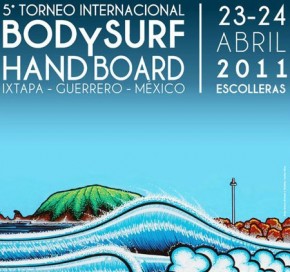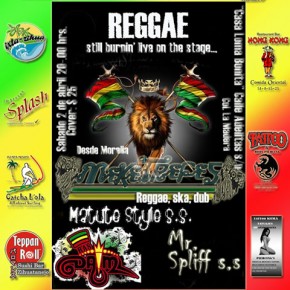Apr 1-11, CXXVI La Feria de la Nieve (126th Annual Snow Fair), Santiago Tulyehualco, Xochimilco. This fair has its roots from pre-Hispanic times. At Tlatelolco, the Aztec’s main market, noble warriors, lords and maidens came to get the goods and products more varied. Amongst the strange and exotic products was the nieve (snow), it was also very expensive costing twenty cocoa seeds. The ice was brought from the Popocatepetl and Ixtacihuatl volcanos. To move the ice, fur coats were used, laid out and covered with sisal fibers to protect it and prevent it from melting. Once in the market, they would finely chop the ice and sweeten it with honey or agave cactus syrup. Aside from its roots, La Feria de la Nieve was instituted in 1529 by Fray Martin de Valencia, one of the first missionaries who came to New Spain. At that time, the fair was for only two days. La Feria de la Nieve evolved and well in 1885, families living in Santiago Tulyehualco took up this tradition. Through the years, the ingenuity of Santiago Tulyehualco producers have created a wide variety of flavors, such as rose petals, pulque with maguey worm, mole, mint, lettuce, rattlesnake, shrimp, scallop, octopus, tequila, among others.
Apr 2, Bandas de la ciudad de Morelia, Casa Loma Bonita Bar, Calle Adelita, Colonia La Madera, Zihuatanejo. Come out and enjoy some Reggae, ska and dub music from bands out of Morelia: Meketrefes, Matute Style, Mr. Spliff, and Ras Daim. Show starts at 8pm, cover $25 pesos.
Apr 2, Pesca de la Sardina (Sardine Fishing Ritual) Tacotalpa, Tabasco. On Good Friday of Easter week, in the picturesque village of Tapijulapa, an enchanting cavern known as Cueva de la Sardina (Cave of the Sardine) is the site of an annual religious ritual with pre-Hispanic roots. The ritual involves fishing for sardines for the purpose of imploring Mother Nature to bring sufficient rain for the crops and the more sardines caught during the ceremony, the better the harvest will be.
Apr 3-10, Feria de la Flor (Cuernavaca Flower Fair) Cuernavaca, Morelos. At this colorful fair the streets and parks of Cuernavaca are filled with wonderfully aromatic flower booths and displays. A number of floral and gardening competitions are hotly contested by green-fingered locals and add a little friendly rivalry to the proceedings. Come the evening, visitors gather at the main plaza for a dazzling sound and light show that illuminates the night sky. The Borda Gardens, formerly a residence of Emperor Maximillian and his wife Carlota, are also well worth a visit at this time for their outstanding displays.
Apr 3, Daylight Saving Time Begins In Mexico. In Mexico, Daylight Saving Time is known as el horario de verano (summer schedule). It has been observed since 1996 throughout most of the country. Take note that the state of Sonora and some remote villages don’t change their clocks. In Mexico, Daylight Saving Time begins the first Sunday in April (forward one hour at 2 a.m.) and ends the last Sunday in October (back one hour at 2 a.m.). The days are different in the United States, which can cause some confusion, particularly in border regions.
Apr 6-10, Zona Maco Mexican Contemporary Art Fair, Centro Banamex, Mexico City. This year’s fair will include 90 galleries from around the world, representing more than 900 artists in over 10,000 square meters of exhibition. A number of the capital’s top museums also put on special exhibitions during the fair. The fair is comprised of six sections entitled Main Section, New Proposals, Publications, Zona Maco South, Zona Maco Design and finally Collectors, all devoted to contemporary art. Visitors are also able to buy art work and selected artists are awarded prizes such as the Tequila Centenary Prize for an Emerging Artist and the Perrier Creativity Prize. For more info: http://zonamaco.com
Apr 17-24, Semana Santa (Holy Week), nationwide. The solemn festivities usually begin on Palm Sunday, commemorating the day that Jesus arrived to Jerusalem prior to his crucifixion. As the biblical passage states, palm branches and clothing were spread in his path, and today, reenactments often include these elements. Holy Thursday commemorates the day of the Last Supper, marked by nationwide visits to seven temples, designated churches in each town or city. Good Friday marks the day that Jesus was crucified on the cross, with most Christians fasting on this day and reenactments of the crucifixion taking place all over the country. Easter Sunday is a day for celebration, commemorating the day of Jesus’ resurrection, featuring music, dance and cultural activities.
Apr 17- May 9, Feria de San Marcos (San Marcos Fair) Aguascalientes, Aguascalientes. This fair is considered the most important celebration of the city of Aguascalientes. Made in honor of San Marcos (Saint Mark) the Evangelist, patron saint of the district designated by the same name. The most important day in the fair is April 25, coinciding with the day of San Marcos. It is considered a show of national importance in Mexico and still has great prestige worldwide. During this period the festival area becomes a scene of artistic events, cultural and social open to the public, featuring handicrafts, bullfights, folkloric dancing, games, cockfights, fireworks displays, cultural events and local cuisine. The National Prize of Poetry and a traditional competition of typical dress also take place during this international celebration.
Apr 23-24, 5th International Open Bodysurf and Handboard Tournament, Ixtapa, Guerrero. This is an annual international open bodysurfing and handboarding championship held at Las Escolleras in Ixtapa.
Apr 25- May 3, Atlzazilistle, Un ritual por la lluvia: Pelea de tigres en Guerrero (A ritual for rain: Fight of tigers in Guerrero), Acatlan, Guerrero. In Nahua indigenous communities of the Guerrero mountains celebrate rituals and the magic of rainfall and soil fertility. Villagers come on pilgrimage to the hills, caves or wells that are considered sacred places. As part of pre-Hispanic rituals, make offerings to the deities of nature using birds, flowers, food, incense, and waxes. In the community of Acatlan (belonging to the low mountain region of Guerrero) believers clad as tigers, stage fights to bring rain and good harvests. This tradition is part of self-sacrifice to honor nature. The tecuanis (combatants) have the belief that the more fights there are, the more rain will fall.
Apr 29-May 22, Feria de Michoacán (Michoacán Annual Fair) Morelia, Michoacán. This annual fair features Mexican crafts and agriculture from all over Michoacán as well as dancing, music, local foods and parties.
- Zona Maco Mexican Contemporary Art Fair, Centro Banamex, Mexico City.
- April 2011 bodysurf competition, Las Escolleras, Ixtapa.
- Bandas de la ciudad de Morelia, Casa Loma Bonita Bar, Calle Adelita, Colonia La Madera, Zihuatanejo.







